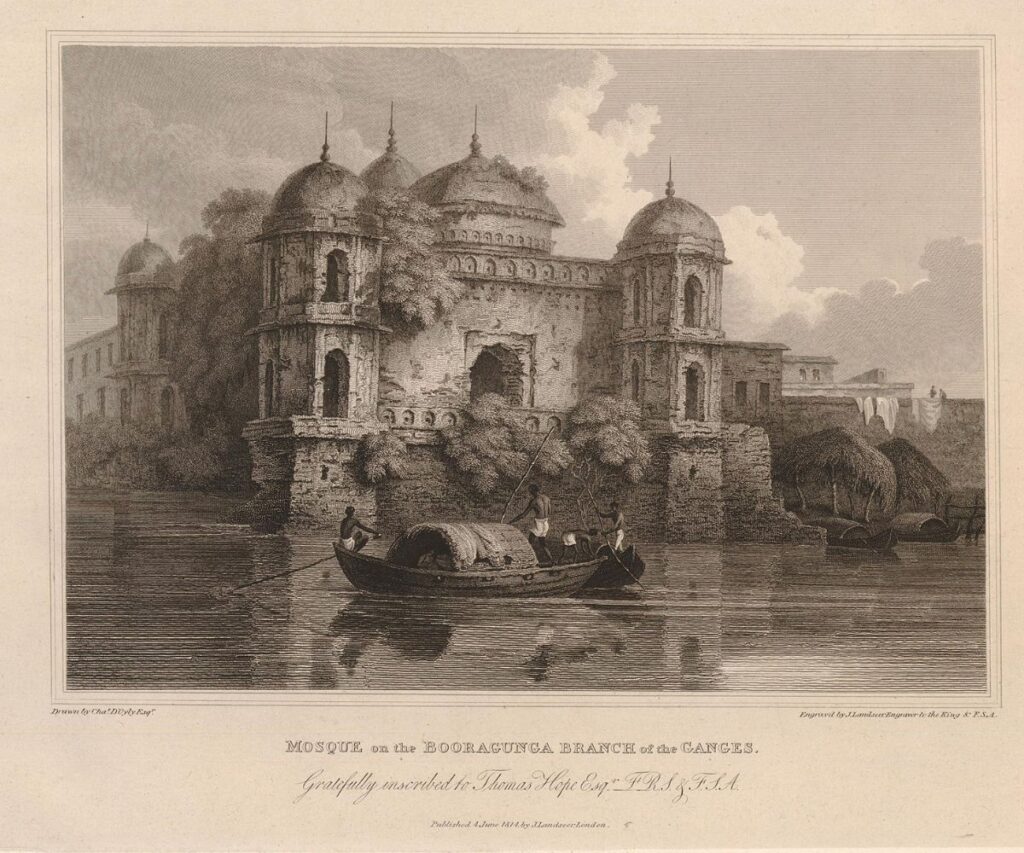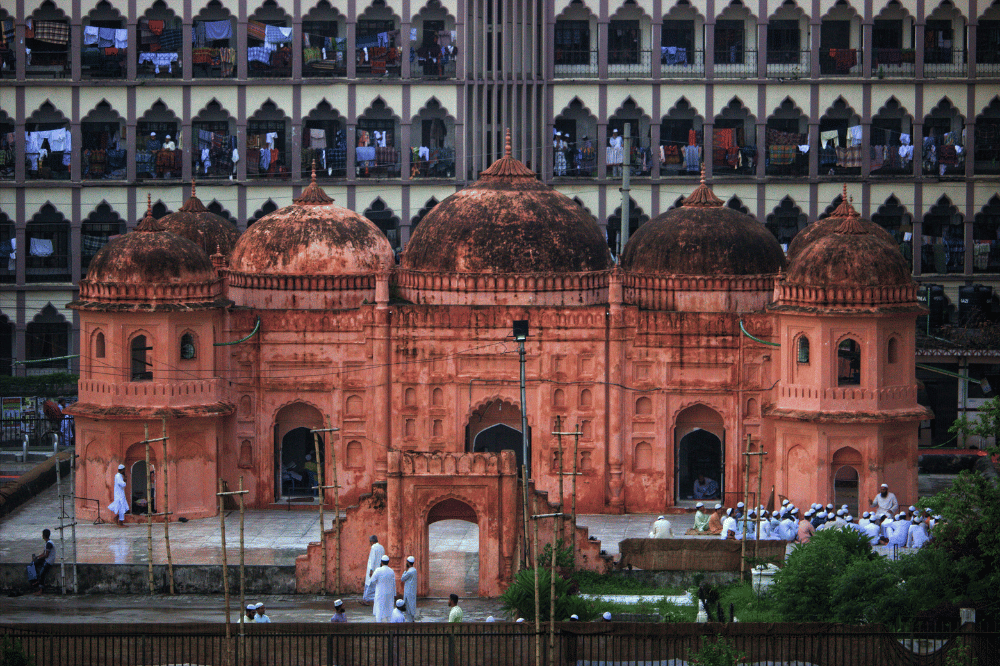
The Seven-Domed Mosque in Bangladesh
Seven-domed mosque, a historical unique architectural monument built during the Mughal rule in the sixteenth century, stands as a witness of time. The location of the mosque is on Banshbari Road of Chan Mia Housing in Mohammadpur of the capital Dhaka. With three large domes over the main prayer room and four smaller minar-shaped domes at the four corners, the mosque is known as Seven Domes.
There is disagreement among local elders about the builder of the mosque. Some believe that it was built by Bujurg Uddin Umid Khan, the eldest son of Nawab Shaista Khan. However, architectural analysis suggests that it was built by Nawab Shaista Khan in 1680 AD during Mughal rule. At that time Buriganga river was flowing near the bank of the mosque. During the rainy season, the people of that time used to offer prayers on the ghats of the mosque in boats, launches or barges while traveling on the river. Sir Charles D Wylie painted a painting of the Seven Domed Mosque in 1814 AD. The headline read ‘Seven mosques on the banks of Buriganga, a branch of the Ganges’. The painting adorns the mosque as it stands, with the stream flowing along the banks of the river.
However, many things have changed since then. The river is filled with tall buildings. Various establishments including small and big shops have been constructed. On the west side of the mosque there is a huge madrasa. The madrasa was built by Shaykhul Hadith Allama Azizul Haque (RA) in 1986.
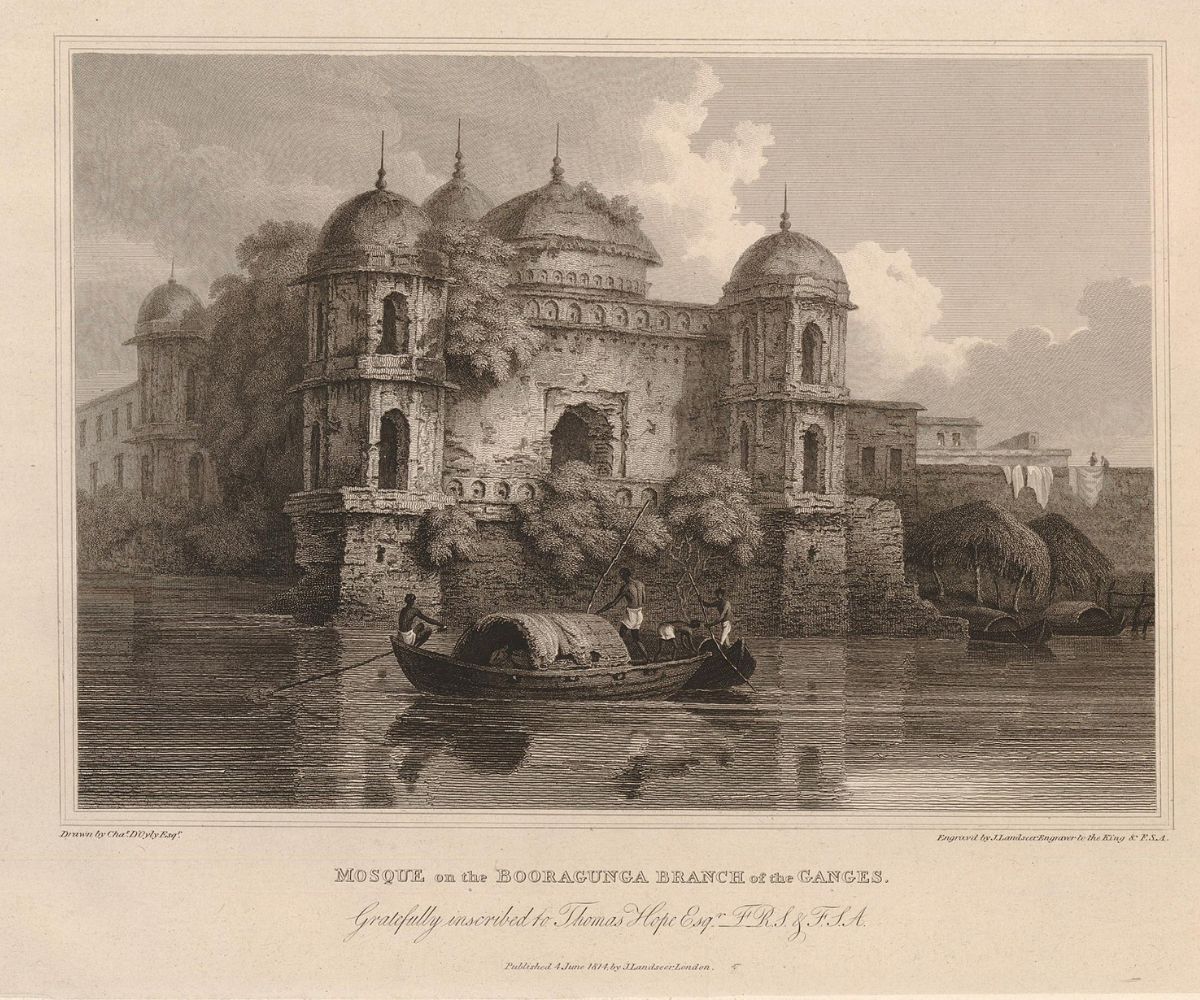
On the eastern side i.e. in front of the mosque, there is a large garden carpeted with green grass, where there are various species of small and large plants including flowering trees. The unique beauty of the garden fascinates the worshipers who come for prayers. It is opened on special days, including two annual Muslim festivals, Eid-ul-Fitr and Eid-ul-Azha.

There are two ablutions on the west side of the mosque for ablution. In the north-west corner there is a common ablution block like in other mosques, but in the south-west corner there is a separate ablution block. A quadrangular ablution with twenty-seven seats surrounds a chowbachcha. At the front of each asana there is a small hollow space to drain out the unused water of the ooze.
The interior of this rectangular mosque is 14.33 meters long and 4.88 meters wide. Besides, the outer length of the prayer room is 17.68 meters and the width is 8.23 meters. There are three mihrabs along the western wall and a raised pulpit next to the central mihrab. The small mihrab-shaped designs scattered across the front walls catch one’s eye.
There are three arched arcades, one each from north-south and east, to enter the central prayer hall. The central door of the mosque is located in the middle of the three pylons on the eastern side. There is a small cemetery in the north-east corner. A little further along the road next to the garden of the mosque, you will see an unknown tomb. No specific information is available about who the tomb belongs to. It is said that this is the tomb of Nawab Shaista Khan’s daughter. The inside of the mausoleum is octagonal but the outside is quadrangular. It is also known as Bibi’s shrine.
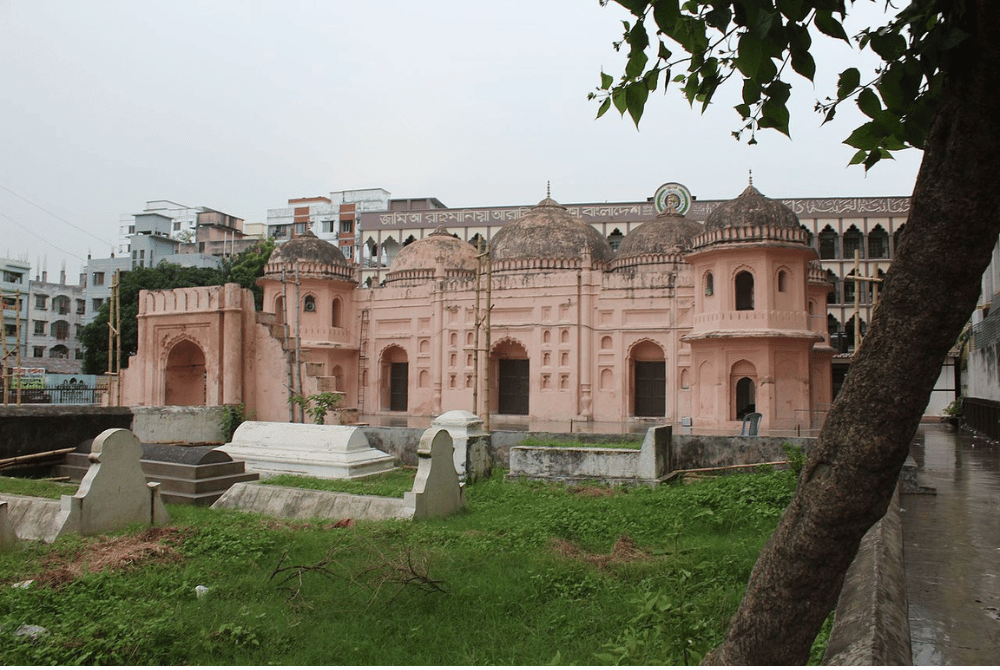
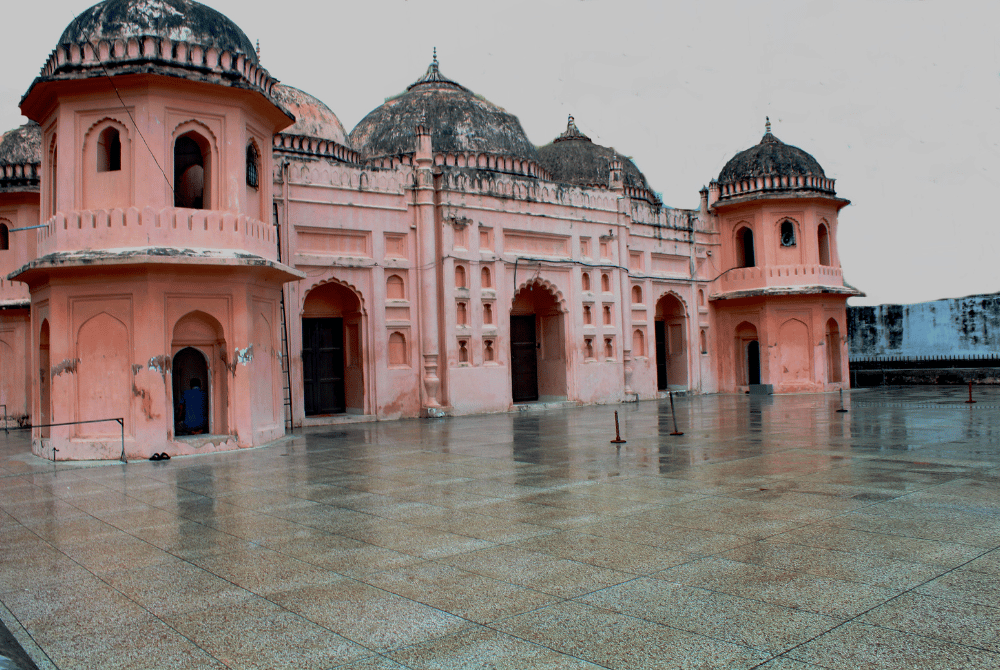
Currently the Seven Domed Mosque and the Unknown Tomb are under the Directorate of Archeology of the Government of the People’s Republic of Bangladesh. Once the mosque fell into ruin and the mausoleum was abandoned, it was restored under the responsibility of the Department of Antiquities.
This three and a half hundred year old mosque is now open to the public. Prayers are offered here with the congregation every time. About a hundred worshipers can pray in the central prayer room. There is ample space for offering prayers inside the dome shaped like four minarets at the four corners. However, the two north-south domes in the west have been closed. Worshipers can pray in the two eastern domes.
There are two front imams in the mosque, one muezzin and three Khadem. Although the archeology department maintains the mosque, it is looked after by local residents. There is a board of directors for management.
Many believe that the three dome mosque of Lalbagh Fort and the Khawaja Ambar mosque are similar to the seven dome mosque .

